
Research Experiences for Undergraduates in Distributed Rational Agents
Open House 2004

Nine undergraduate participants of the REU summer program participated in the REU Open House 2004 to present their research projects.
Simulation and Interfaces for Intelligent Environments
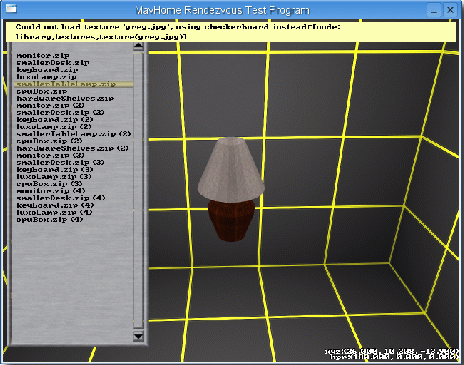
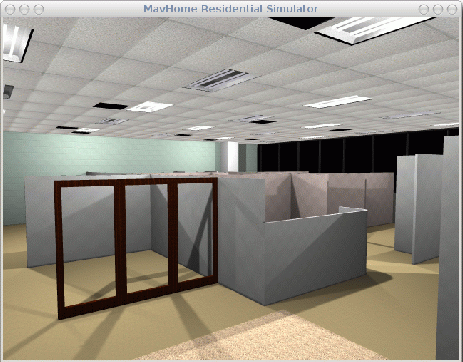 The
goal of this project was to develop a simulation environment for
Intelligent Environments that facilitates the simple introduction of
new components and devices (such as lamps, furniture, etc.) and
their integration into the system without the need for restarting or
programming effort. The purpose of the simulation is to allow for
off-line experiments with prediction and decision-making algorithms
as well as to serve as a graphical interface for the devices in the
home. For the latter, the graphical simulation permits lights to be
turned on and off via mouse clicks on the screen.
The
goal of this project was to develop a simulation environment for
Intelligent Environments that facilitates the simple introduction of
new components and devices (such as lamps, furniture, etc.) and
their integration into the system without the need for restarting or
programming effort. The purpose of the simulation is to allow for
off-line experiments with prediction and decision-making algorithms
as well as to serve as a graphical interface for the devices in the
home. For the latter, the graphical simulation permits lights to be
turned on and off via mouse clicks on the screen.
To achieve the
simulation goals, one REU students performed research in the
development of graphical models and their integration using
automatic service discovery tools. In particular, starting with
results from the previous year's REU program, the student developed
a set of tools that permit the easy creation of graphical models for
objects in the environment and that integrate such a model into a
Rendezvousä object. This permits
devices to be added to the environment by simply running the
corresponding object on a computer node in the network. The objects
are then automatically discovered by the simulation server which
reads their specifications (graphical model, location, and
operation) and integrates them into the simulation interface. In
this way, new devices can be incorporated into the interface by
simply putting them onto the computer network. The figure shows the
graphics design tool and the simulation environment developed.
Anomaly Detection for In-Home Lighting Systems
In this project, one REU participant performed research in anomaly detection using sensors and actuators in intelligent environments. The focus here was in the ability to detect problems in the lighting system in the house using the sensors network deployed throughout the environment. Here, the student developed models for the lighting and sensor system and used these to monitor the light levels to detect incorrect light commands or faulty light sources. In addition, the student integrated these models and verification mechanisms with an automatic service discovery framework to permit light sources to be added or removed from the environment. Evaluations of the anomaly detection scheme showed good results at determining faulty lights or errors in the switching of light sources. Combined with a set of action rules, the system was then used to successfully correct errors in the X10-based light control system in the MavHome laboratory.
Data Visualization

 Another
challenge arising in complex smart home environments is the
monitoring and evaluation of the huge amounts of data created by all
the sensor network nodes in the home. To address this, one REU
participant performed research into data visualization techniques
and developed a web-based interface to the sensor network in MavHome
that permits the hierarchical analysis of the sensor data. To
develop this interface, the student investigated different
techniques as well as human factors involving the useful
presentation of spatially and temporally distributed sensor data.
The resulting system permits the monitoring of single or multiple
sensors at different time scales. Moreover, it permits the selection
of sensors by home regions and sensor types. The figure shows two
examples of data from different sensors in the home. The data on the
left shows the changes in temperature readings over a one month
period while the graph on the left illustrates the activities on a
light switch over a one hour time span.
Another
challenge arising in complex smart home environments is the
monitoring and evaluation of the huge amounts of data created by all
the sensor network nodes in the home. To address this, one REU
participant performed research into data visualization techniques
and developed a web-based interface to the sensor network in MavHome
that permits the hierarchical analysis of the sensor data. To
develop this interface, the student investigated different
techniques as well as human factors involving the useful
presentation of spatially and temporally distributed sensor data.
The resulting system permits the monitoring of single or multiple
sensors at different time scales. Moreover, it permits the selection
of sensors by home regions and sensor types. The figure shows two
examples of data from different sensors in the home. The data on the
left shows the changes in temperature readings over a one month
period while the graph on the left illustrates the activities on a
light switch over a one hour time span.
Biometrics for Key-less Entry and Security
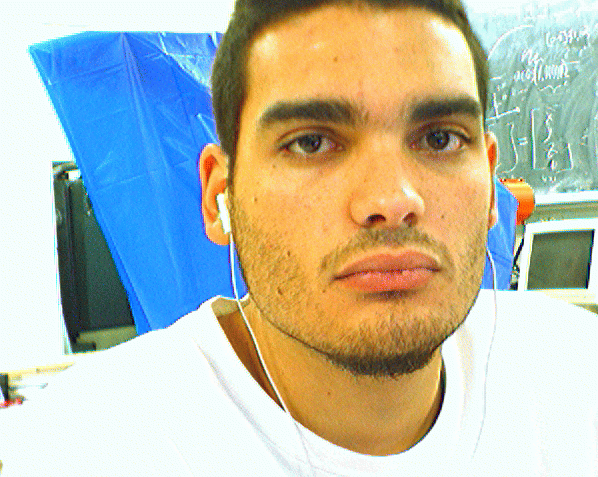
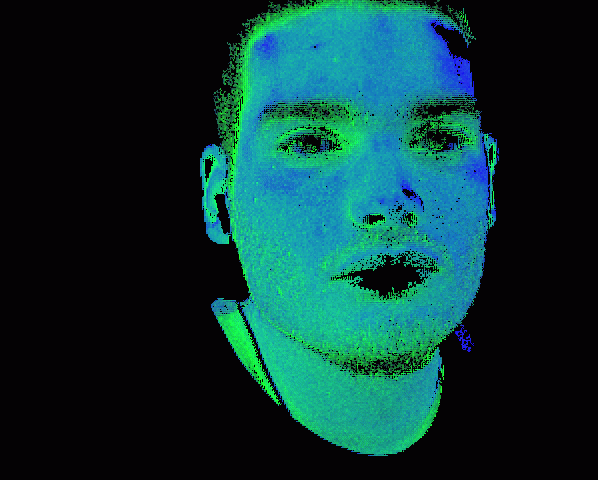 The
goal of this project was to research biometric identification
mechanisms for secure entry into a smart home. One REU participant
here investigated a range of techniques including face recognition,
voice profiling, and finger print analysis. He then developed a
system that uses face recognition to determine the identity of a
person. To do this, he augmented a system developed in a previous
REU project by implementing image processing algorithms that permit
the robust extraction of a face in the presence of a cluttered
background. The system developed here uses research results that
show that the color range of skin falls into a narrow range when
viewed in a HSV color format. The figure shows the result of the
face finding algorithm. Starting from the image on the left, the
algorithm identifies skin regions and highlights them, leading to
the coded image on the right. Using this image, the system developed
by the student then determines the eye locations and uses a face
recognition algorithm based on Eigenfaces to identify the person.
The
goal of this project was to research biometric identification
mechanisms for secure entry into a smart home. One REU participant
here investigated a range of techniques including face recognition,
voice profiling, and finger print analysis. He then developed a
system that uses face recognition to determine the identity of a
person. To do this, he augmented a system developed in a previous
REU project by implementing image processing algorithms that permit
the robust extraction of a face in the presence of a cluttered
background. The system developed here uses research results that
show that the color range of skin falls into a narrow range when
viewed in a HSV color format. The figure shows the result of the
face finding algorithm. Starting from the image on the left, the
algorithm identifies skin regions and highlights them, leading to
the coded image on the right. Using this image, the system developed
by the student then determines the eye locations and uses a face
recognition algorithm based on Eigenfaces to identify the person.
Interfaces Specifications for Smart Appliances
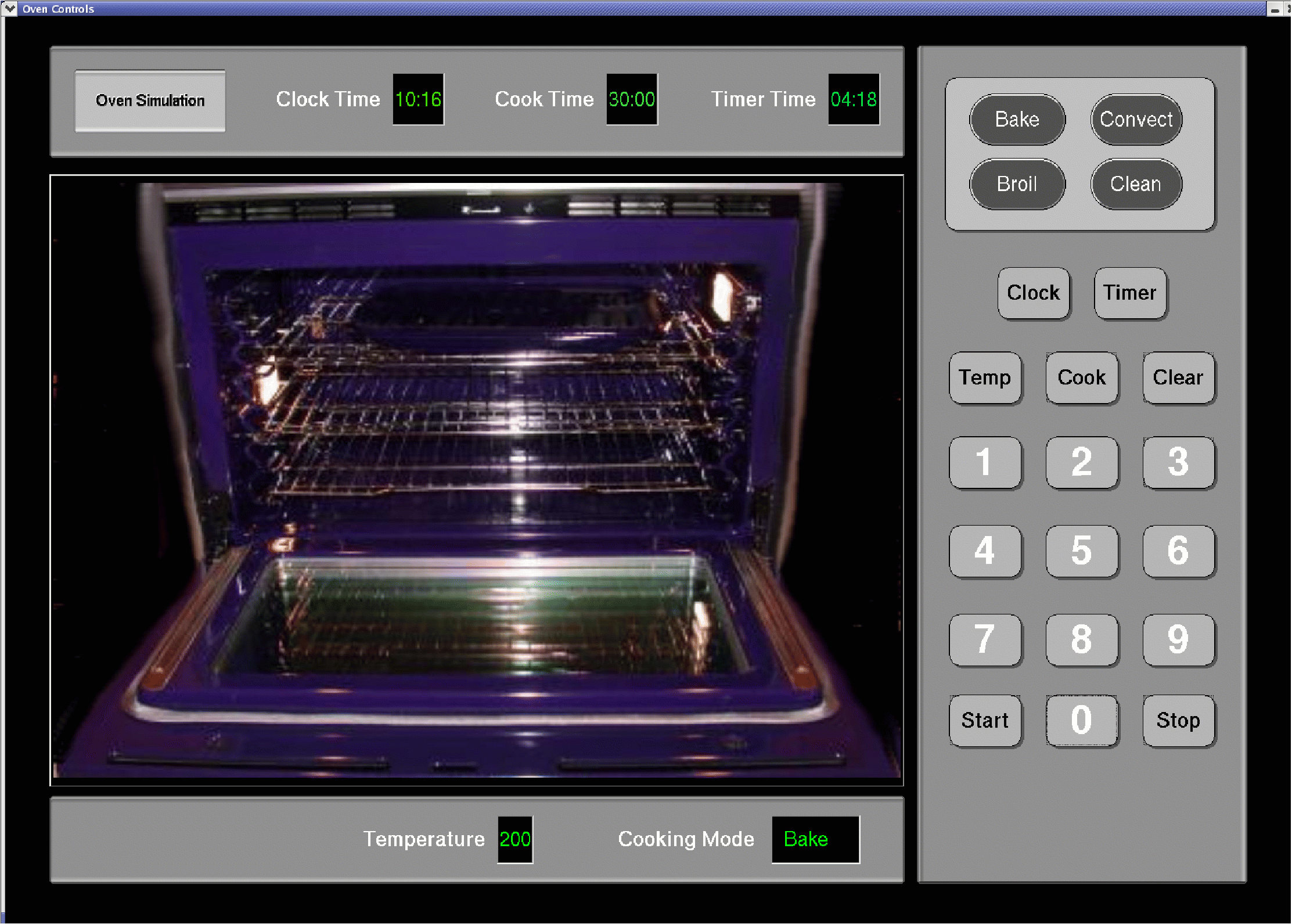
 An
important component of smart homes is the ability of the home to
monitor and control devices in the environment. To make this
possible, however, it is essential that ``smart'' devices use common
interface descriptions that permits a home to interface with them.
The goal of this project was to develop such interface
specifications for a range of appliances that are common in home
environments. Here one REU participant developed a hierarchical
interface specifications for heating and cooking appliances in the
kitchen. Different appliances, including stove tops, microwave
ovens, and stoves were modeled as part of this project, interface
specifications were created, and virtual appliance simulations were
implemented. The interface specifications for all devices here
inherit common traits (such as temperature regulation, timing for
cooking tasks, etc.) from a heating device class and are then
further augmented with components describing specific capabilities
of the particular device. The figure shows two examples of virtual
devices developed in this project. As indicated before, the
interface specifications for both of these appliances share a common
core that is then augmented to capture all capabilities of the final
devices. The reason for such a hierarchical interface definition is
to permit new appliances (with their basic capabilities) to be
integrated into existing smart home environments without major
changes to the surrounding software.
An
important component of smart homes is the ability of the home to
monitor and control devices in the environment. To make this
possible, however, it is essential that ``smart'' devices use common
interface descriptions that permits a home to interface with them.
The goal of this project was to develop such interface
specifications for a range of appliances that are common in home
environments. Here one REU participant developed a hierarchical
interface specifications for heating and cooking appliances in the
kitchen. Different appliances, including stove tops, microwave
ovens, and stoves were modeled as part of this project, interface
specifications were created, and virtual appliance simulations were
implemented. The interface specifications for all devices here
inherit common traits (such as temperature regulation, timing for
cooking tasks, etc.) from a heating device class and are then
further augmented with components describing specific capabilities
of the particular device. The figure shows two examples of virtual
devices developed in this project. As indicated before, the
interface specifications for both of these appliances share a common
core that is then augmented to capture all capabilities of the final
devices. The reason for such a hierarchical interface definition is
to permit new appliances (with their basic capabilities) to be
integrated into existing smart home environments without major
changes to the surrounding software.
Control of Service Robots
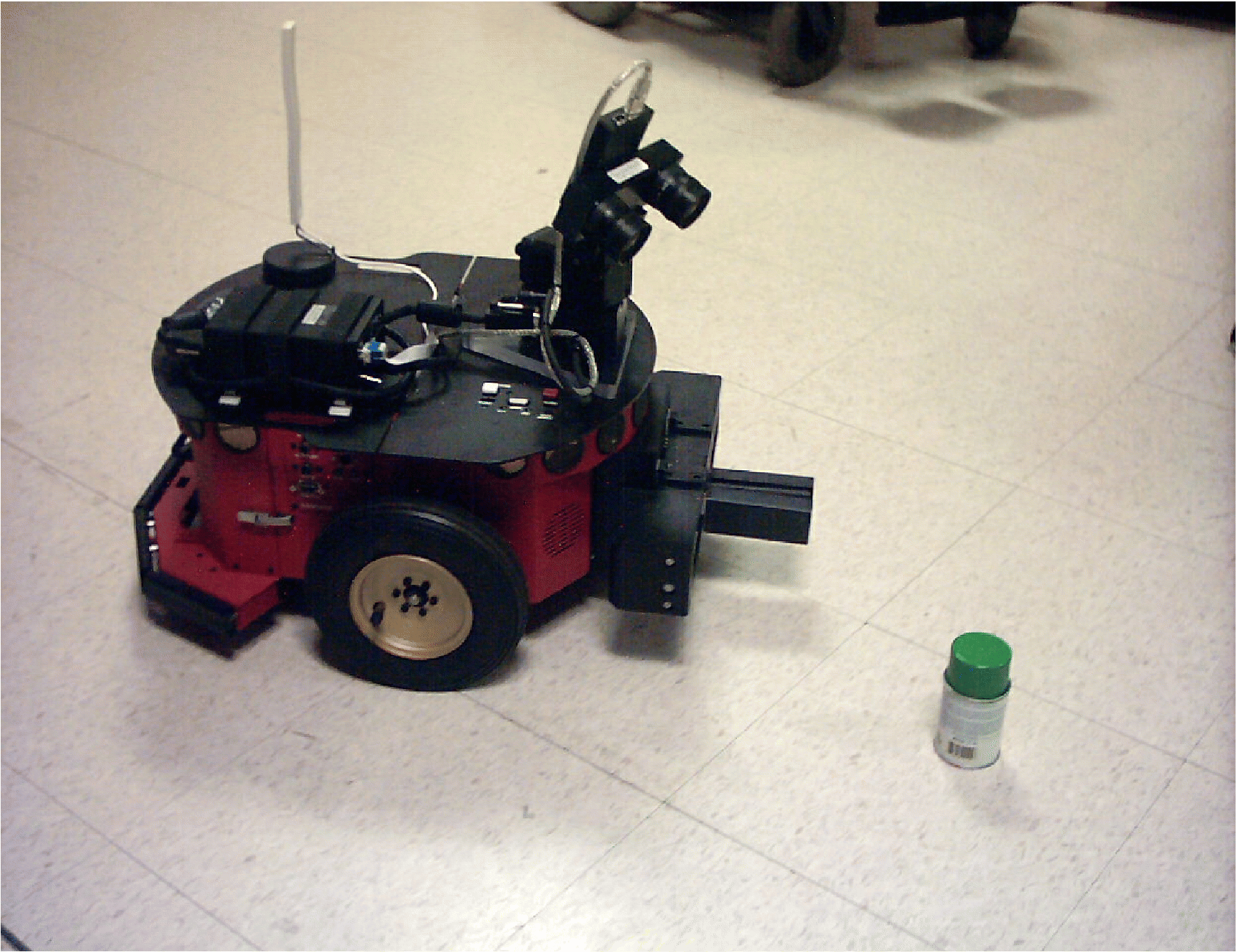 To
fully utilize the capabilities of smart homes, service robots are an
important component. Over the summer one REU participant performed
research into the control of basic service robots. In particular, he
developed a control system that permits the precise control of a
robot platform while providing for a simple means of integrating
higher-level control and decision-making component. The figure shows
the robot platform used for this project. The student further
integrated this low-level control system with a previously developed
system for shared robot/human autonomy to form a robot system that
can navigate to designated locations. During this navigation it
integrates user commands to form strategies that match the
particular preferences of the user.
To
fully utilize the capabilities of smart homes, service robots are an
important component. Over the summer one REU participant performed
research into the control of basic service robots. In particular, he
developed a control system that permits the precise control of a
robot platform while providing for a simple means of integrating
higher-level control and decision-making component. The figure shows
the robot platform used for this project. The student further
integrated this low-level control system with a previously developed
system for shared robot/human autonomy to form a robot system that
can navigate to designated locations. During this navigation it
integrates user commands to form strategies that match the
particular preferences of the user.
Wireless Localization in In-Door Environments
To
make intelligent environments more competent it is important that
the locations of inhabitants and of various mobile devices are
known. The goal of this project was the implementation of a system
that permits wireless nodes to be localized using the received
signal strength (RSSI) readings from the wireless network. This
permits such devices to be localized without the need for additional
sensor infrastructure. Over the summer one REU student here,
starting from a system that was developed in prior research,
investigated wireless localization techniques and implemented a
system that uses sequential Monte Carlo Sampling techniques
(particle filters) to estimate the location of a wireless-enabled
PDA in the {\em MavHome} laboratory. As part of this, he developed a
wireless map that describes the signal strength throughout the
environment and created an algorithm that fuses a series of readings
into an estimate of the location. The figure shows the layout of the
lab and the measured signal strength map. In this map, locations
with a stronger signal are indicated with a darker shade of red.
While the distribution of signal strengths throughout the lab proved
to be very ambiguous, the resulting system performed reasonably
well, allowing the determination of the approximate location of the
device.
For additional information regarding this program please contact:
Manfred Huber
University of Texas at
Arlington
Department of Computer Science and Engineering
Box
19015
Arlington, TX 76019-0015
Email: reu@cse.uta.edu
* This project is funded by NSF grant EIA-0139564